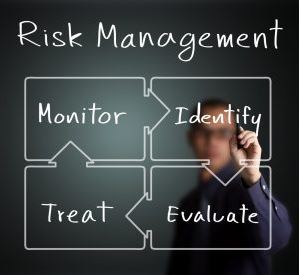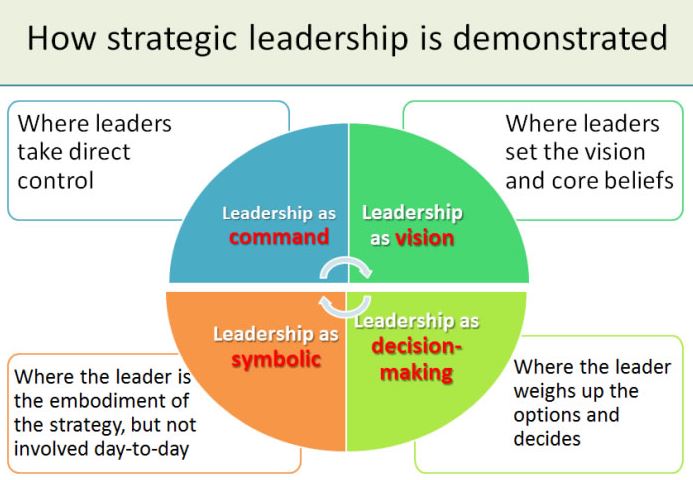Risk Management Strategies
Risk Management Strategies MBA Project. Risk management is the process of identifying and evaluating the possibility of threats that are posed to operations of an organization. Every organization is faced with challenges whose potential could negatively affect the business. In this regard, the mandate of the organization is to ensure that the risks are identified and evaluated comprehensively so that the best measures can be put in place to prevent a possible spread and damage of those risks.
The management of risks in the operations of an organization includes making them a priority and coordinating resources to mitigate them and preventing damages that could come from them (Hopkin et al, 2018). These risks are posed to businesses and organizations from time to time, making it necessary for the respective organizations to come up with risk management strategies. In this report, the technical aspect of risk management in operations of an organization will be discussed in detail.
Identification of Information Assets using Risk Management Strategies
Every organization has information assets that are very important to them. They are tools of data that help the organization to run its activities and programs. Without the help of these information assets, it is not possible for the business to make progress and plans for the future. There are various types of information assets in a business that should be protected from risks. A lot of threats are posed to these information assets and hence the need to manage those risks. These information assets include;
- Trade secrets: Every business has unique features and secrets of trade that makes them different from their competitors in business. These trade secrets include designs, formulas, procedures, processes, techniques and methods of production and operations. All these trade secrets are documented and kept secure for the good of the business. To businesses that keep leading in the market place, their greatest competitive advantage is the trade secrets. They are very unique to the operations and undertakings of the business. (Rampini et al, 2019). They are therefore kept safe and secure so that they cannot be assessed by third parties and intruders. In this way, the organization’s leadership puts measures in place to prevent the risk of having these trade secrets leaked. They form part of the most sensitive part of information assets within an organization and they are also not made available to every member of the team. They can only be accessed by the crucial and relevant team to avoid the aforementioned risk.
- Strategies: Every organization has a strategy and a plan that outlines the goals and objectives of the company. They are kept as secret to act as pointers of direction towards a projected future. The quality of those strategies and plan determines the highest level of success and influence that a business can ever command in the marketplace. This piece of information asset is therefore very important to an organization. They help them to understand what is expected of them in every step of the way. The risk of having such information leaked would deprive the organization the chance of leading because the strategy could be implemented to the advantage of a competitor.
- Support decision: This is one of the most important parts of information of the organization as far as data assets are concerned. It entails the decisions made the leadership of the organization and the decisions they make from time to time. All the styles of leadership and decisions of progress made are documented in this piece of information asset. There is therefore need to keep such information confidential and out of bound by intruders and third parties. It is very risky to have that information hacked because trade secrets and strategies would be accessed as well. The only way to manage such a risk is to improve security of the network systems and keeping the information with the radius on only relevant staff (Dang, et al, 2014).
- Marketing media and techniques: To every organization, there is a marketing team that creates awareness of the brand to the market. Each team has its own techniques that keep them relevant in the pursuit of advertisements. In this way, the secrets of marketing have to be kept safe so that they are copied and implemented to favor competitors. The marketing media therefore and all their details are kept very safe and there is need to manage every threat can could be posed to them. Most marketing videos and posters of advertisement do not carry the trademark because they are raw and specific to the awareness they are intended to create (Louche et al, 2017). To prevent a case where they are tampered with or even stolen, managements ensure that they remain a top secret and safely kept within the organization data. This is done to ensure that all possible risks are mitigated and managed effectively.
- Trademarks and copyrights: No matter how successful a business or an organization is, they are nothing without trademarks and copyrights. Every competitor is out to make a kill and the malicious ones don’t mind doing it the wrong way. One of the wicked encounters that face businesses and organizations is not securing their brands from trademark and copyright infringements. It is very necessary to ensure that the business and its copyright are secured through legal procedures that are within the jurisdiction of the rule of law. In this way, there will be consequences to everyone who tries to tamper with them. If the legal processes are well followed in this regard, the aforementioned risk is managed and mitigated.
Weighted Factor Analysis
This refers to the techniques used by businesses and organizations to assess and audit competing alternatives against each other before implementation. Every implementation especially regarding management of risk is evaluated comprehensively against other possible choices so as to come up with the most appropriate method. It is very important to ensure that proper auditing of alternatives is done before implementation. In risk management, weighted factor analysis is followed before the final decision is made on which path to go (Al-Zuheri et al, 2019).
In the decision-making process for instance, the management will assemble all the listed ideas concerning the best method to mitigate risks. Decisions are not just made without the process of weighted factor analysis. Members of the group might be required to come up with a strategy that would help the organization overcome various challenges. In this respect, they issue their opinions to the management for assessment. This is where the weighted factor analysis procedure comes in. after the various operational evaluations, the leadership of the business or the taskforce given that mandate can make a final decision and that will be the most appropriate in risk management.
The management of the company does not rely on analysis opinions of the members alone. They also engage the leadership team in the process through focus groups and individual assessments. They are allowed to showcase their beliefs and ideologies concerning matters of risk management and possible threats. This is a very important procedure because it puts the two groups under scrutiny and the idea is to assess the most appropriate idea to follow. They can assess and distinguish between the appropriate of ideas given by members against those given by the management. They also assess the possibility of future outcomes and the ideas that were relevant in successfully fighting former risks in business. After that, they are able to make the right decisions that will help in the mitigation of risks and their management (Cohen et al, 2019).
Risk Probability and Impact
Probability of risk is the likelihood of a threat to the business that carries a series of impacts with it. The probability of risk is always assessed and understood by the organization before it is made a priority. The probable risks fall under the category of operational risks, credit risks, market risks or even liquidity risks. Some of the risk probabilities and their impacts are discussed below.
- Loss of suppliers and customers: No matter how influential a business can be, it is not functional without suppliers and customers. These two pillars are the working engine of business because it cannot be operated with suppliers and customers. Worse still, it is not possible to operate with one without the other. Businesses therefore need to need to check on all possibilities of losing these two important pillars of business (Wang et al, 2013). The impact of losing them would capsize the business and leave it on its knees. Businesses are not able to operate and the result could be to shut them down.
- Natural disasters: Some occurrences are very unavoidable and human control is almost irrelevant. Floods or fire damages are possible risks that face businesses from time to time. Diseases and sicknesses like the current global pandemic of corona virus have brought economies of most businesses to their knees. Some of the business risks from natural disasters are unprecedented and it is important to mitigate the risks as much as possible. The impact felt from these disasters is that businesses lose control and focus. Customers change priorities as they focus on cushioning themselves against those disasters. Nonetheless, the flow of supply and items is affected to a great extent making it hard for businesses to maintain momentum of operation (Lawler et al, 2019).
- Bankruptcy and financial loses: Working capital in most businesses is borrowed from financial institutions. Some businesses thrive on those loans and are able to pay them back. However, there is a risk possibility especially when they are not able to clear those debts. More so, business has very many shades and circles that affect its operations and profit making strategy. They are supposed to be managed in the most possible ways and convenient times (Jung et al, 2017). The overall impact of this possible risk is shutting down of businesses, auctioning of property, people losing jobs and filing for bankruptcy.
Acceptance Risk Control
Acceptance risk control is the deliberate approval of strategies put in place to manage risks. There are various processes that the management of an organization uses to implement decisions that pertain to the risks identified and their possible threats. Every taskforce within an organization has the mandate of coming up with the best strategies of risk management and mitigation so as to spearhead approval through acceptance risk control (Rampini et al, 2016).
To accept risk control comes in various shapes and sizes. A good example is avoidance of a certain agenda. If an organization was overspending on budgets, the possible risk is loss of finances whose aftermath would be chaotic to the whole business. There are other negative operational strategies that don’t make economic sense according to the management. The acceptance risk control measure in this case will be to avoid the strategy. Avoidance helps to manage the risk and come up with alternatives methods of operation. This has everything to do with taking action to ensure that all the risks are managed.
Transference and change of tact is part of acceptance risk control. Nothing saves the business from losses and risks better than this tack. Accepting the control measure is simply characterized by action and management-oriented practices. There is transfer of operations within the group and the taskforce is supposed to ensure that the measures put in place can eliminate the probability of extended risks to a great extent. Mitigation techniques are very important at this stage and this call for massive action to curb the threat of various business risks. It is recommended to use the most appropriate methods to ensure that the risks are mitigated through control acceptance (Giannakis et al, 2019).
Microsoft Risk Management Approach
This refers to the technical aspect of risk management strategies and the approach taken by an organization within a network system. There are various security baselines that need to be protected from cyber threats that have been advanced with technological improvements. The possible risk control management approach is to ensure that the best has been done to secure the systems of cyber threats. The approach is to put measures that can possibly deal with cyber crime and that have an aspect of security. These approaches are specific to the intended use as described below.
Putting Up Security Firewalls
Installation of firewalls on computers is important in securing a network system from threats of attacks. Every business faces the danger of being attacked by cyber criminals through malwares and malicious virus (Aven et al, 2016). These viruses are dangerous and they might hack a lot of details that would otherwise cripple the business.
Educating the Team of Cyber Threats
The management should ensure that all members working in their various teams are enlightened on how to avoid these risks. They are supposed to be taught how to control threats like phishing attacks and avoiding to open strange emails, attachments of following suspicious links to avoid entertaining the possibility of installing viruses on computers without knowing.
Keeping Confidential Information Safe
There are very important pieces of data and information that should be kept safe. These pieces of information include trade secrets, trademarks & copyrights, support decisions, strategies and plans and organizational goals and objectives of the projected future. Legal licenses, list of customers and suppliers and financial database also falls under this category. These forms of information should not be let loose to members they don’t concern. They should be kept confidential to avoid the threat of leakage which could otherwise be used to plot a second stage attack to the organization (Giannakis et al, 2016).
Factor Analysis of Information Risk
To every organization, the magnitude of risk posed to them can only be controlled is factor analysis of information is put in place. A lot of data within an organization is at risk considering that the cyber criminals know that it is the epitome of the organization. There is therefore need to have the best mechanisms in place so as to assess the risk that comes with information assets. The aforementioned information assets are supposed to be secured and the best way to do that is through factor analysis.
Accurate possibilities of risk management can only be enhanced through factor analysis. It is not possible to have the best proposal of solutions and this can only be achieved if the analysis is done comprehensively. The assessment of these risks follows a certain pattern that is prominent to the organization in question. In most cases, the proximity of a successful endeavor is determined by the factor analysis of information risk (Leisen et al, 2019).
Information assets are the greatest pillars the organization. They hold the company together through documentation of data that is crucial to the organization. To avoid loss of such data, the most appropriate methods should be put in place to ensure that risks are mitigated in the best ways possible. This can only be achieved if the management is willing to implement factor analysis of information risk.
Conclusion
In conclusion, robust risk management strategies are very important in business. Risks are bound to occur in groups, companies and organizations from time to time. They present in various forms and high-level mitigation is required to avoid getting overwhelmed. In the above-mentioned recommendations, risks can be managed and mitigated effectively if followed through. The quality of business standing and its relevance and longevity in the marketplace is determined by how well risks are managed. In fact, the ability to manage risks in business effectively is a competitive advantage.
References
Hopkin, P. (2018). Fundamentals of risk management strategies: understanding, evaluating and implementing effective risk management. Kogan Page Publishers.
Cohen, D., Plonsky, O., & Erev, I. (2019). On the impact of experience on probability weighting in decisions under risk. Decision.
Aven, T. (2016). Risk assessment and risk management strategies: Review of recent advances on their foundation. European Journal of Operational Research, 253(1), 1-13.
Rampini, A. A., Viswanathan, S., & Vuillemey, G. (2019). Risk management in financial institutions. The Journal of Finance.
Giannakis, M., & Papadopoulos, T. (2016). Supply chain sustainability: A risk management approach. International Journal of Production Economics, 171, 455-470.
Lawler, S., & Bright, D. (2019). ‘It’s just business’: Leaders’ strategies for risk management in criminal networks. In Criminal Networks and Law Enforcement (pp. 55-74). Routledge.
Dang, Q. T., Jasovska, P., & Rammal, H. G. (2014). International business-government relations: The risk management strategies of MNEs in emerging economies. Journal of World Business, 55(1), 101042.
Wang, L., & Ahsan, D. (2013). Stakeholders’ perceptions on risk and risk management strategies: the case of Chinese dock-less bike-sharing enterprise. International Journal of Green Economics, 13(2), 146-165.
Louche, C., & Idowu, S. (2017). Innovative CSR: From risk management to value creation. Routledge.
Clarke, J. E., & Liesch, P. W. (2017). Wait-and-see strategy: Risk management strategies in the internationalization process model. Journal of International Business Studies, 48(8), 923-940.
Al-Zuheri, A., Amer, Y., & Vlachos, I. (2019). Risk Assessment Strategies and Analysis of Healthcare System Using Probability-Impact Matrix. Nur Primary Care, 3(4), 1-4.
van de Water, S., van Dam, I., Schaart, D. R., Al-Mamgani, A., Heijmen, B. J., & Hoogeman, M. S. (2016). The price of robustness; impact of worst-case optimization on organ-at-risk dose and complication probability in intensity-modulated proton therapy for oropharyngeal cancer patients. Radiotherapy and Oncology, 120(1), 56-62.
Jung, Y. S., Park, C. H., Kim, N. H., Lee, M. Y., & Park, D. I. (2017). Impact of age on the risk of advanced colorectal neoplasia in a young population: an analysis using the predicted probability model. Digestive diseases and sciences, 62(9), 2518-2525.
Leisen, R., Steffen, B., & Weber, C. (2019). Regulatory risk and the resilience of new sustainable business models in the energy sector. Journal of cleaner production, 219, 865-878.
Risk Management Strategies – Relevant Links
If you enjoyed reading this post on risk management strategies, I would be very grateful if you could help spread this knowledge by emailing this post to a friend, or sharing it on Twitter or Facebook. Thank you.





